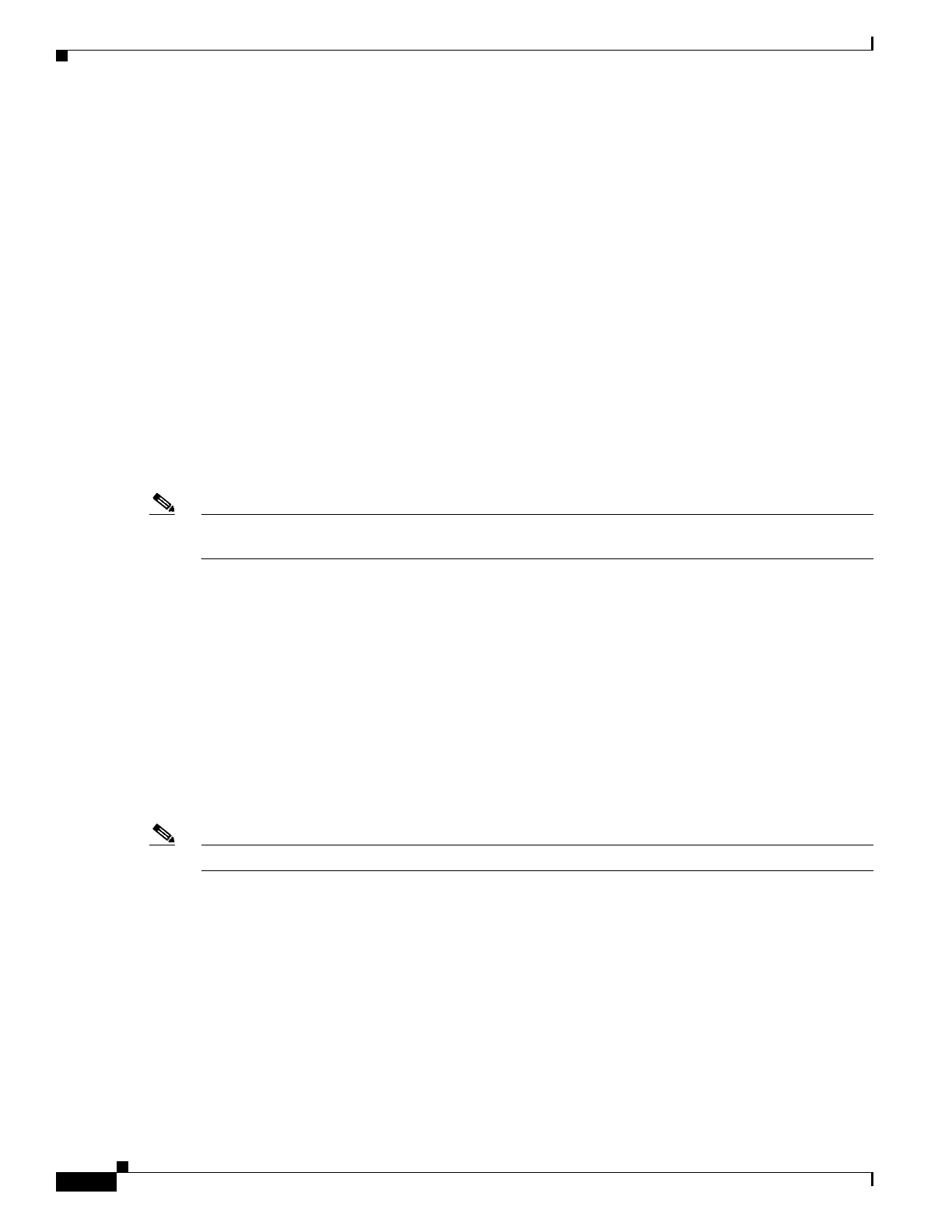1-24
Catalyst 3750-X and 3560-X Switch Software Configuration Guide
OL-25303-03
Chapter 1 Configuring IPv6 Unicast Routing
Configuring IPv6
This example shows you how to configure a DHCP guard policy Te st and attach it to an interface:
Switch(config)# ipv6 dhcp-guard policy Test
Switch(config-dhcp-guard)# no trusted-port
Switch(config-dhcp-guard)# exit
Switch(config)# interface gigabitethernet2/0/3
Switch(config-if)# ipv6 dhcp guard attach-policy Test
Switch(config-if)# exit
OR
Switch(config)# vlan configuration 1-10
Switch(config-vlan-config)# ipv6 dhcp guard attach-policy Test
Switch(config-vlan-config)# exit
Switch# show ipv6 dhcp-guard policy Test
Dhcp guard policy: Test
Device Role: dhcp server
Target: Gi2/0/3 vlan 1 vlan 2 vlan 3 vlan 4 vlan 5 vlan 6 vlan 7 vlan 8 vlan 9 vlan 10
Max Preference: 255
Min Preference: 0
This example shows how you can enable the FHS feature on an interface or VLAN, without creating a
snooping policy.
Note Creating a policy gives you the flexibility to configure as per your needs. If you enable the feature
without creating a policy then the default policy configuration is applied:
Switch(config)# interface GigabitEthernet1/0/9
Switch(config-if)# ipv6 nd inspection
Switch(config-if)# ipv6 nd raguard
Switch(config-if)# ipv6 snooping
Switch(config-if)# ipv6 dhcp guard
Switch(config-if)# ipv6 source-guard
Switch(config-if)# end
OR
Switch(config)# vlan configuration 1
Switch(config-vlan-config)# ipv6 nd inspection
Switch(config-vlan-config)# ipv6 nd raguard
Switch(config-vlan-config)# ipv6 dhcp guard
Switch(config-vlan-config)# ipv6 snooping
Note You cannot apply a source-guard policy to the VLAN.
For more examples, see the Configuration Examples for Implementing First Hop Security in IPv6 section
of the Cisco IOS IPv6 Configuration Library on Cisco.com.
Configuring Default Router Preference
Router advertisement messages are sent with the default router preference (DRP) configured by the
ipv6 nd router-preference interface configuration command. If no DRP is configured, RAs are sent
with a medium preference.
A DRP is useful when two routers on a link might provide equivalent, but not equal-cost routing, and
policy might dictate that hosts should prefer one of the routers.

